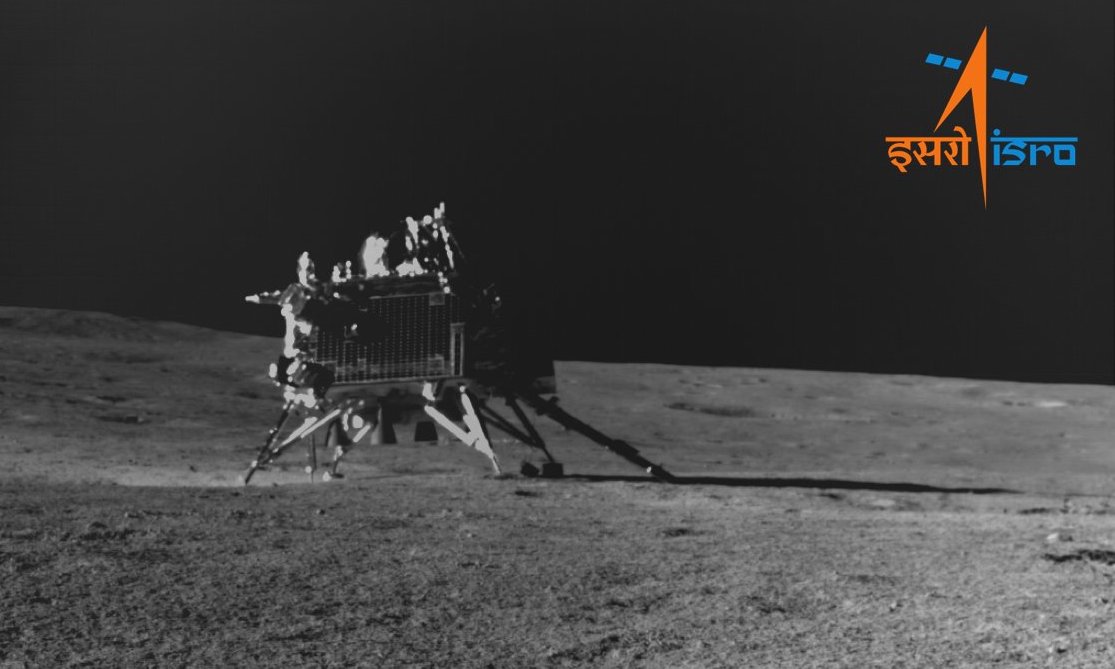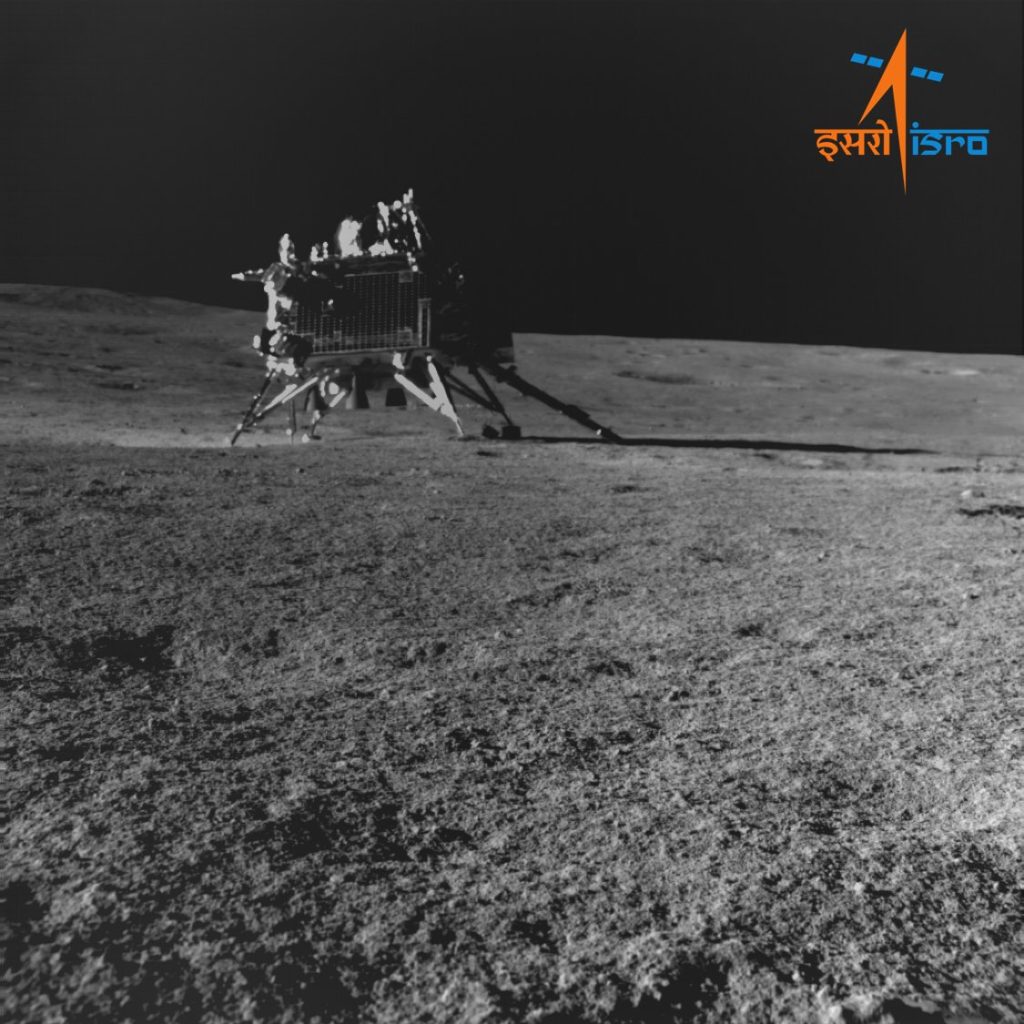
It’s been an entire week since Chandrayaan-3 landed on the Moon, putting India in a small club of those who can do it. Since then ISRO has been sharing photos from its lander and rover, as well as some early science results. On Wednesday, ISRO treated us to a photo of the Chandrayaan-3 lander, on the surface of the Moon, courtesy of the small rover that tagged along for the ride.
Photo shows Chandrayaan-3 lander firmly on the ground
Since landing on the Moon Chandrayaan-3 has been hard at work deploying not just a rover but several experiments on the lunar surface. This is not just India’s first lander on the Moon but the first lander from anyone to land at the lunar South Pole. So any scientific data for those wishing to set up a base there, China and the United States, will be important for planning future missions.
One of the first tasks Chandrayaan-3’s Vikram lander took on once it landed was to deploy the small rover named Pragyan. A ramp was lowered from the side of the lander that gave Pragyan a smooth descent onto the lunar surface. The small briefcase-size rover put another first in India’s bag as they became the fourth country to have a rover on the Moon.
ISRO has shared several photos so far of the lunar surface, some of the first were of the rover moving down its ramp. More photos came from Pragyan’s navigation cameras which are positioned at the front of the rover. These showed photos of it moving around the surface, arriving at a crater, and then backing away from it.
The latest photo is focused on the Vikram lander, a portrait you might say, showing it landed on the Moon. The lander perched on the crater-filled landscape with the black sky backdrop serves as an epic visual for Indians to celebrate their accomplishment. The photo also shows how well Vikram stuck its landing.

Chandrayaan-3 has already started to change our minds about how we thought the Moon operated. Temperature data from a probe on the Vikram lander shows that surface temperatures near the South Pole are much hotter than expected. At the surface, the lunar regolith was clocked at 140 degrees Fahrenheit. However, just eight centimeters below the surface, the temperature plummeted to 14 degrees.
The start of a new lunar future
Since the last missions of the US-Soviet space race took place in the 1970s, landing on the Moon has been a rare and rather less than successful undertaking. In just the last few years we’ve seen multiple missions make landing attempts and some even succeeded.
In the coming years, that number is expected to grow. Between NASA’s Artemis missions, China and Russia’s plan to land on the Moon, and countless commercial ventures, expect to see Moon landers show up in your newsfeed a lot more.
FTC: We use income earning auto affiliate links. More.


Comments